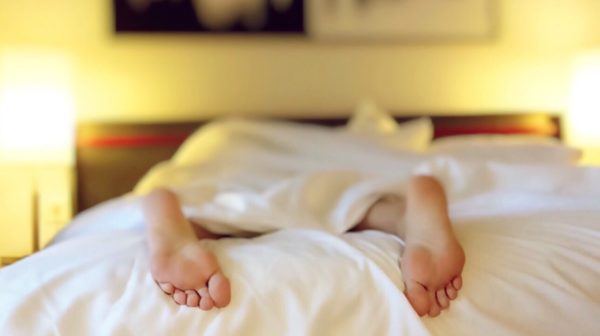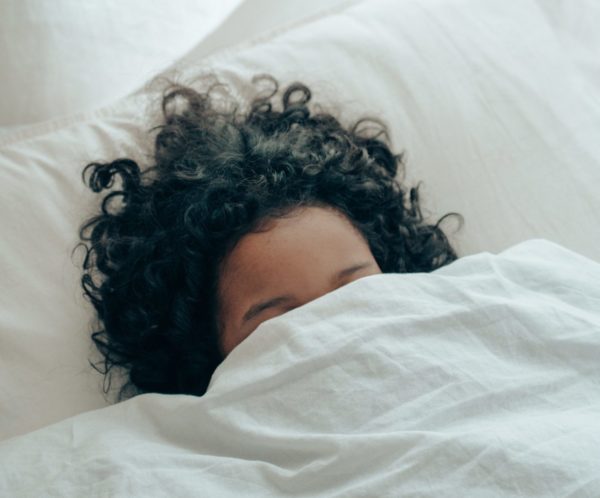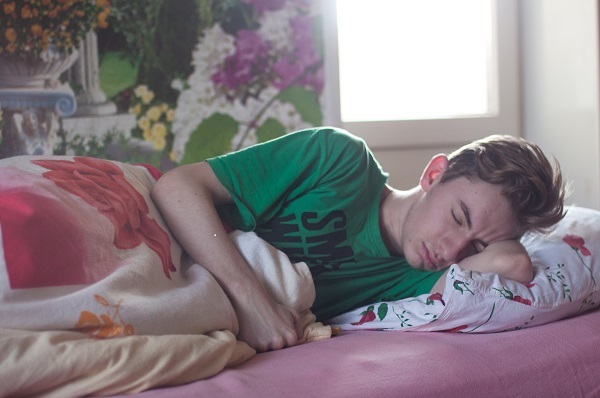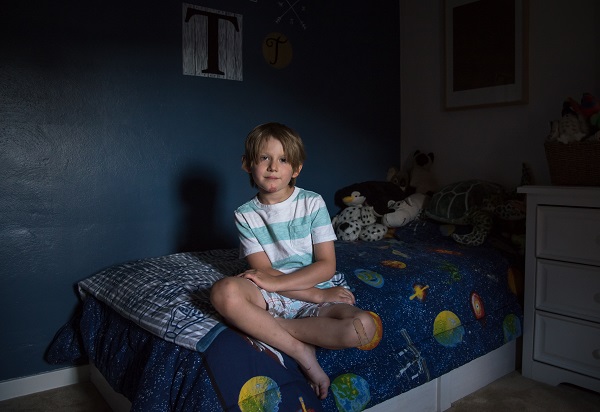
From toddlers to teens: How to help your kids get a good night’s sleep
Photo: Rider Mackey, 6, has had sleep issues since he was a baby. Photo by John C. Schisler.
Rider Mackey’s poor sleep habits began when he was an infant, waking four or five times a night. When he was old enough to climb out of his crib, he’d find a couch or somewhere else to spend part of the night.
Now 6, Rider finally sleeps through most nights, but he wakes up every day at 4 a.m. Never later, says his mother, Abby Mackey of Mt. Lebanon.
“He’s never been a strong sleeper,” she says. “He’s done a thousand things so well in his development — he was a champion potty trainer, and he’s a really smart kid. But ever since he was a little baby, he never slept well, never did that natural evolution where they sleep a little longer and then sleep through the night.”
Rider knows that not sleeping well can affect him during the day. He’ll get tired and moody, and that contributes to his anxiety. But Abby and her husband, Jason, have found a way to live with the problem. They start preparing Rider for bedtime around 6 or 6:30 p.m., giving him a gummy with melatonin and reading with him until he gets sleepy. In the mornings, when he’s up early, he plays with Legos until his parents and 1-year-old brother Teddy wake up.
“I would not say we’re at a great place with it, but compared to where we’ve been, it’s pretty good,” says Abby. “He has matured some and is sleeping in his own bed.”
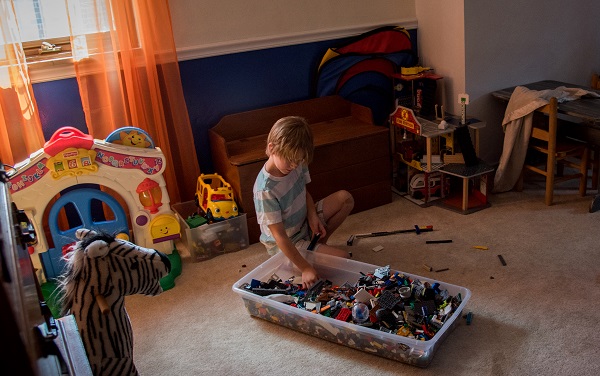
The chemistry of sleep
The Mackeys are approaching the problem correctly by working backwards from an established wake-up time to make sure Rider gets enough hours of sleep and they found a bedtime routine that helps him to wind down. The two tips are among those recommended by Dr. Ryan Anderson, a clinical psychologist with the Child Development Unit and the Pediatric Sleep Program at UPMC Children’s Hospital of Pittsburgh.
“There’s a set of brain chemicals that slow everything else down, put the brakes on communication between brain cells. That’s what’s happening at the biological level. We experience this as a subjective sensation of sleepiness,” says Anderson.
“The other set of processes that’s important is related to your daily rhythms or schedules,” he says. “When the circadian rhythm is linked well with the buildup of brain chemicals, or ‘sleep pressure,’ it’s easier for someone to fall asleep and stay asleep and wake up at a scheduled time.”
Everyone encounters a night of sleeplessness now and then, maybe several nights in a row, especially when they’re under stress. Parents may notice this happening more often with children and adolescents during the pandemic because their routines have been disrupted by school closings, staying at home, and missing out on recreational activities with friends. Sleep deprivation in kids can result in poor academic performance, weight gain, hyperactivity and temperamental behavior.
“We know our bodies and brains respond to stress and one of the ways this can come out is disturbances in our sleep,” says Dr. Jessica Levenson. She provides clinical services to adolescents and young adults at the Center for Adolescent and Young Adult Health at Children’s.
“Nobody falls asleep as soon as their head hits the pillow, but not all sleep problems develop into a sleep disorder,” she says. “We all have many aspects of sleep health that matter, whether or not we have a sleep disorder. Maybe you don’t get enough sleep, or you get too much.”
Red flags and resources
Anderson and Levenson recently took part in a webinar, “Sleep Disturbances Due to COVID,” sponsored by Staunton Farm Foundation. The session discussed possible causes of sleep disturbances, red flags that may signal a problem, and resources for parents to get help.
Levenson encourages parents to teach kids that beds are for sleeping only. That allows the brain to associate lying in bed with falling asleep.
“Particularly when many of us are working from home, the division between workspace and home space may have gotten blurry,” she says. “Help the brain make the association that the bed is only for sleeping. Doing all other activities, except maybe for sex, outside of the bed helps reinforce that.”
And if you’re not sleepy at bedtime? “We encourage people to wait a little later, until you’re really feeling sleepy, and do some calm activities in the evening.”
Like Anderson, she endorses waking up at the same time every day — even on weekends — to set the circadian rhythm, the internal sleep-wake cycle. Teenagers, whose brains are still developing, may need more sleep than adults, requiring 10 hours a night instead of, say, 7 or 8.
To recognize a sleep problem, both doctors recommend keeping a sleep diary — you can download one here — and watching trends that don’t resolve after a few days. If sleepless nights have an impact on daytime activities, that may be an indication of an issue. Feeling frustrated or stressed because of a sleep problem may mean it’s time to seek help.
Discuss a child’s sleep issues with a pediatrician, primary care doctor or therapist. Consult approved online sources, such as the National Sleep Foundation, the National Institutes of Health, the American Academy of Sleep Medicine, and the Autism Speaks Autism Treatment Network. A recommended book for parents of infants and toddlers is “Sleeping Through the Night,” by Jodi Mendel.
Treatment for sleep problems is likely to include cognitive behavior therapy to shift the way someone thinks about sleep. There are no medications approved by the Food and Drug Administration for the treatment of sleep problems in those younger than age 18.
Many patients see excellent results with therapy, says Levenson.
“Sometimes, during times of stress, we have thoughts that can interfere and really impact our sleep,” she says. “One of the goals of treatment is to identify thoughts that are not helpful, and maybe are stressful.”
To nap or not to nap
Sleep is not tiredness or fatigue, says Anderson. It’s all about those sleep-promoting brain chemicals. Napping can be helpful for some people, as long as you don’t nap too late in the day or nap for longer than 30 minutes.
Four-year-olds notoriously have difficulty sleeping, says Anderson, yet research shows only about 25 percent of them get naps.
“Give your child a nap opportunity, even if they don’t sleep,” he says. “Between 12:30 and 1:30 p.m. would be a good time to go down.”
He cautions against allowing teenagers to sleep too much during the day, however: “Sleep is like a bank account — you only have so much to withdraw and you use up that sleep pressure.”
Parents should take away smartphones, laptops and TV after a certain hour because the blue light interferes with the brain’s chemicals. Allowing adolescents and teens to lie in bed, scrolling through Instagram or texting with friends, will make them put off sleeping.
Establish a good bedtime routine with children when they’re young, to help them wind down. This practice can include taking a bath, getting into their PJs, brushing their teeth, and then reading a story once they get into bed.
“Each step in the routine should move your child one step closer to the bedroom, and the last step should be reading one or two short stories, tucking them in and getting a good-night kiss,” says Anderson.
The sleep diary becomes essential when it comes to changing a child’s sleep habits, as the Mackeys did with Rider. Figure out what’s important to the child and the family, and then use those factors to reinforce behavioral change, says Anderson.
“Some of us are better at producing sleep than others, but there’s lots of things we can do environmentally to optimize that change,” he says. “Sometimes there’s something to be said for just paying attention.”
Tips to Encourage Healthy Sleep
Everybody can have a bad night of sleep, especially when stressful experiences happen. But difficulty sleeping for more than a few nights may indicate a problem. Here are some tips for parents with a child who cannot sleep:
Keep a sleep diary. This helps you to pay attention to variables that affect a child’s sleep habits and to define what concerns you most.
Set a wake-up time. Waking up at the same time each day helps to assure the proper buildup of sleep pressure by bedtime.
Use the bed only for sleep. This encourages the brain to associate lying in bed with sleeping.
Establish a bedtime routine. Encourage quiet time and discourage the use of bright lights, loud music and electronic devices. Each step in the routine takes you closer to lights out.
Know your teen’s sleep habits. Signs of insufficient sleep can include difficulty waking in the morning, irritability, falling asleep during the day, and taking long naps on weekends.
Plan ahead for schedule disruptions. As back-to-school approaches, gradually change the sleep schedule. The transition can take several days or several weeks.
Seek help when necessary. If you suspect your child has a sleep disorder, talk to your pediatrician or therapist. Serious but treatable sleep disorders include narcolepsy, sleep apnea and restless legs syndrome.
This story is part of the Kidsburgh Mental Health Series, funded by a grant from the Staunton Farm Foundation. The Foundation is dedicated to improving the lives of people who live with mental illness and/or substance use disorders. The Foundation’s vision is to invest in a future where behavioral health is understood, supported, and accepted.
Other stories in the series include the Kidsburgh Mental Health Survey report, insight as to how parents can deal with coronavirus anxiety, and advice on remaining resilient during times that try your family’s mental health. Check out the fascinating look at the teenage brain. Other stories include Anchorpoint Counseling Ministry’s hugely successful fundraiser, the secret to happy, successful kids and looking to Fred Rogers for help in talking to kids about life’s most challenging issues. Don’t miss how practicing mindfulness helps kids ease anxiety, the way teens Stand Together Against the Stigma and the piece on the rise of cyberbullying.
